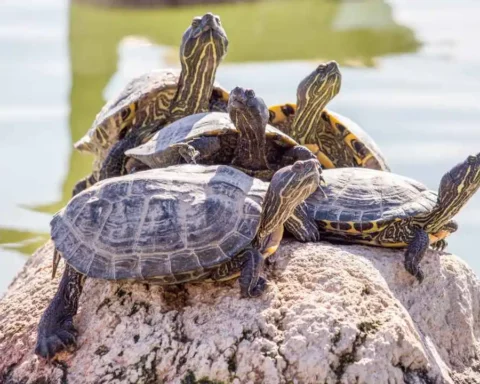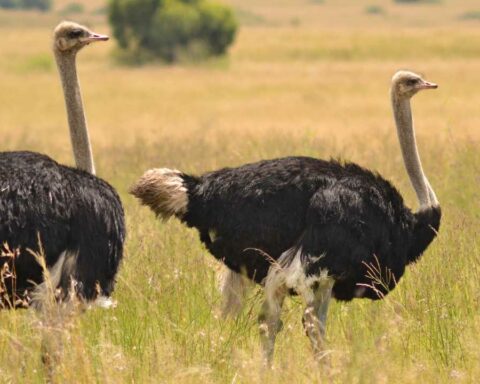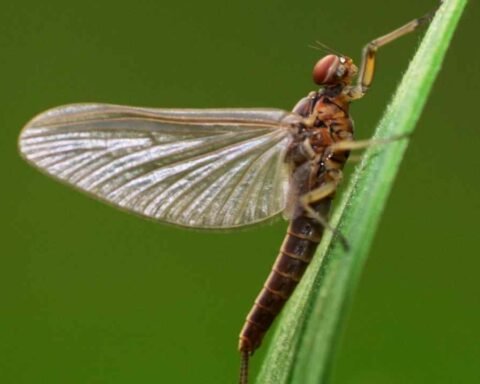Yes, rhino horns grow back. Just like the fingernails and hair of humans, rhino horns grow throughout their life. Their horns have the ability to regenerate.
Rhinoceroses or simply rhinos are odd-toed ungulates that belong to the family Rhinocerotidae. There are five living or extant species of rhinos, three of which are indigenous to South and Southeast Asia and two to Africa.
Rhinos have a distinctive feature, that is horns above their nose rather than the top of their head. Their horns are made up of keratin protein, the same material that makes our fingernails and hair. Just like our nails, their horns also have a blood line.
Their horns are used in traditional Chinese medicines and for other purposes, which make them highly vulnerable to poaching. Poachers kill rhinos for their horns, which are sold with high prices in the black market. Here we gathered information about whether rhino horns can grow back or not.
Do Rhino Horns Grow Back?

Yes, rhino horns grow back if trimmed, removed or damaged. The reason is that their horns are made up of keratin protein, the same material that makes our nails and hair. Unlike the tusks of elephants (which are made up of teeth-like bony material called dentin), the horns of rhinos have the ability to regenerate.
Rhinos are highly vulnerable to poaching because of their horns, which are sold at high prices in black market. In Africa, conservationists have been trimming the horns of rhinos to prevent them from poaching, as rhinos without horns are useless for poachers.
Anatomy of Rhino Horns

The rhino horn is composed of two different structures: one are filaments that are mostly hair-like and built in encircling layers around a central core, while the other structure is matrix-like that surrounds and fills the spaces among the filaments. These two types of structures together make up a biological composite, which is similar to a polymer composite or ceramic.
Rhino horns are made up of keratin protein, the material that also makes our finger-nails and hair. Unlike the horns of a bovine or deer, which are rooted in the skeleton, rhino horns are rooted in their nose skin. Like our finger-nails and hair, the rhino horns grow throughout their life and have the ability to repair if damaged or broken.
Like our fingernails, their horns also have a blood line, so the front horn is marked about 7cm and the back horn about 5 cm from the base when trimming (as an effort to protect them from poachers).
Can Rhino Horns Grow Back?
Yes, rhino horns can grow back. They can regenerate and repair themselves if damaged or broken.
Factors Affecting Regrowth Of Rhino Horns

There are several factors that affect the regrowth of rhino horns. The main factors are:
Age:
The age of rhinos has a great impact on the quick regrowth of their horns. Regrowth of horns in older individuals tends to have a slower rate than younger individuals. The reason is physiological changes in the body associated with aging, which make the regeneration slow.
Nutrition:
Nutrition is another main factor that has an important role in the regrowth of rhino horns. Adequate nutrition and food sources are essential for the regeneration of their horns, if naturally lost or being harvested.
Other factors that affect the regrowth of their horns include habitat destruction, climate change, diseases, and poaching.
Purpose And Function Of Rhino Horns

Rhinoceroses use their horns for a variety of purposes. The main function or purpose is defense against predators. They use their horns to keep away predators as well as to fight against other rhinos during the mating season.
Horns also help them to find mates. During the hot climate, horns provide insulation to their heads when they are resting or sleeping. Additionally, rhino horns are used in traditional Chinese medicines to treat several ailments, however, there is no scientific proof to support such claims.
Reasons For Removing Rhino Horns

Rhino horns are being removed as a conservation effort to protect them from poachers. Rhino horns are highly valuable in many parts of the world and are much in demand. It is used in traditional Chinese medicines to treat a variety of diseases like fever, nose bleeding, and strokes.
Their horns are also used for making ceremonial cups, belt buckles, hair pens, buttons, paperweights, and dagger handles in some Arab countries like Oman and Yemen. Horns make rhinos highly vulnerable to poachers. Their horns are removed as a conservation effort to protect them from poachers, as a rhino without horns has no value for poachers. Additionally, dehorning can reduce competition among males during the mating season, which can help to maintain their healthy population in their natural habitats.





